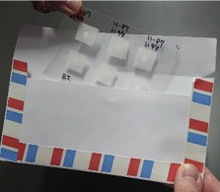
Research that makes people laugh and then think
 |
Wild cats of britain - fantastic story  The staff of the British Museum of World History began to study the process of domestication of a wild cat. As a result of many years of research, it turned out that in the wild there are practically no wild cats left. Due to the lack of wild cats in the territory of modern Britain, specialists decided to first bring the wild cat out, artificially, so to speak. Fifteen cats of different breeds, colors and ages were collected in the secret halls of the museum. “We turned off the lights and turned on rap,” says project manager Dr. Stanley Yates, “we felt like discoverers, earthlings landing on the Martian surface, because no one had done this before”. Museum staff ran around secret rooms, pounded with sticks and screamed in scary voices. This was supposed to contribute to the speedy wildness of cats. When people got tired, they launched a special cleaning robot with the siren turned on. The robot was equipped with buckets, mops, rags and rattles. From time to time, rats caught in the Thames were launched into the secret halls of the museum. When the rats in the Thames ended, they began to be delivered by airmail from the sewers of Paris, Lisbon and St. Petersburg. A total of 15,775 rats of various sizes were delivered. Each rat was weighed and recorded in a log the results of measuring heart rate and intestinal temperature. Surprisingly, the intracranial pressure of rats from Lisbon completely coincided with the intracranial pressure of rats accidentally caught in the Andaman Islands. What results have been achieved? Six months after the start of the experiments, three cats survived. These cats were completely wild. Such wild cats have never been seen before. The reaction to any action of the museum staff was one - a terrible roar and animal grin. The second phase of the experiment, the domestication phase, began. Soft lights were turned on in all rooms, photographic models were cleaned, periodically the best works of classical music were performed, and the latest original Whiskas developments were used as food. The secretions of cats are carefully examined in the most modern scientific laboratories of foggy Albion, and the sounds are recorded on optical media. "We have no doubt that our work will end in complete success," says Dr. Stanley Yates, "who will refuse models and Whiskas? There are no such cats".
Источник - пресса |
| (c) 2010-2024 ig-nobel.ru | ig-nobel@mail.ru |

